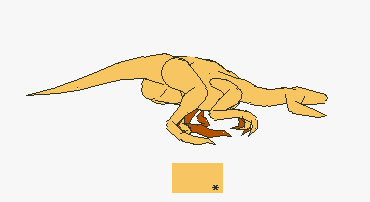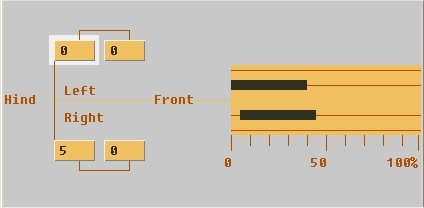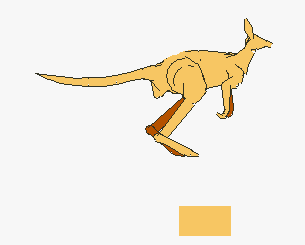



|
A Deinonychus is an extinct Terran predatory dinosaur, here shown stalking. The left side of the diagram shows phase differences between the legs, starting with the left hind leg at 0. The cycle runs from 0% to 100%. The right hind leg is at 50%, which means it is half a cycle out of phase with the left hind leg. The phases of the front legs do not really matter here. The right half of the diagram shows one walking cycle horizontally. Hind legs are in the middle, and front legs on the outside. The periods during which legs touch the ground are shown with black bars. The left hind leg starts at 0%, and the right one at 50%. Because the hind legs are on the ground for over half the cycle length, there is a period in which both legs are on the ground. In fact, this happens twice during each cycle. This is a normal slow bipedal walk. The animation speaks for itself except for the part below the animal. What you see there is whether any legs are touching the ground. If so, their position is indicated by a star. If more than one leg is on the ground, the stars are connected by lines. For the stalking Deinonychus, there is always at least one leg on the ground, because it is moving slowly. |
|
You can, of course, walk with both legs in phase, and then you get a hopping gait. Kangaroos on Earth do it, but no large Furahan animal walks this way. And here is the resulting kangaroo. Notice how its tail has to swing up and down to balance the legs. |


|